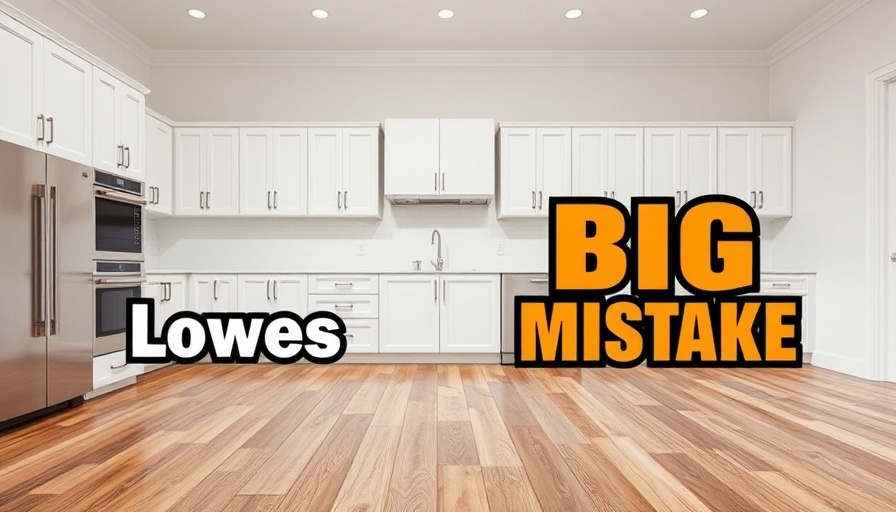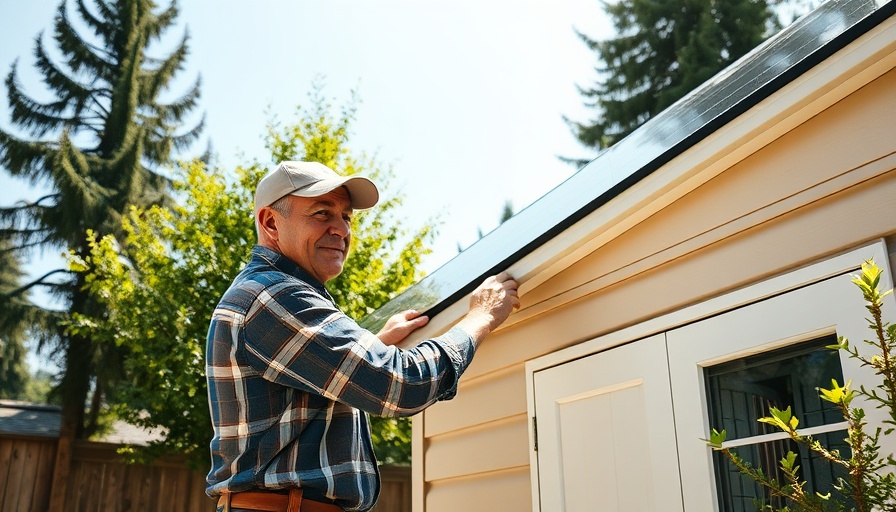
Introduction: The Smart Home Revolution
With the rise of smart home technology, homeowners are finding solutions that not only enhance comfort but also improve efficiency. Imagine a home that can detect and rectify its own issues—this is the future we are heading toward. In the realm of smart devices, automation isn't just about convenience; it's about creating a seamless system capable of self-repair. The video How my Smart Home heals itself in Home Assistant! dives into how this is achievable, showcasing innovative techniques that can empower your home to maintain itself effectively.
In How my Smart Home heals itself in Home Assistant!, the video explores smart home automation techniques that ignite further discussion on achieving a self-sufficient home.
The Challenge of Smart Devices
As seen in the video, maintaining smart devices like LED light strips can be a source of frustration due to their tendency to go offline. The frequent need for manual resetting not only disrupts everyday life but can also detract from the overall experience of using smart technology. Recognizing this challenge paves the way for the creative implementation of automations that account for these failures. Home Assistant enables us to identify when a device becomes unavailable and trigger automated actions, allowing for a true self-healing mechanism.
Transforming Your LED Light Strips
The implementation starts with simple yet effective automation. By connecting LED light strips to a smart outlet, homeowners can automate the reboot process. The automation monitors the status of the light strips, and if they are offline for a set duration—like 5 minutes—it triggers a restart of the power. This not only ensures that the lights aren't just functional but also caters to the user experience by keeping lights aligned with user preferences based on the conditions from other devices, such as desk lights.
Innovative Solutions for Smart Light Bulbs
Smart bulbs often come with their challenges, such as not switching on or off as expected. The video introduces a creative solution using smart light switches that maintain constant power to the bulbs. This design allows the switch to act as a smart button while keeping the bulbs powered continuously—eliminating offline issues altogether.
Imagine a scenario where your lights can always be turned off or on with a simple press while integrating the power of a script that checks the status of the bulbs. If any bulbs are offline, the system automatically resets the power without user intervention, all while appearing seamless to the family. This not only retains functionality but also fulfills the critical spouse approval factor.
The Role of Automation in Maintenance
Beyond light fixtures, the concept of automation extends to other smart devices like TVs and robotic vacuums. The idea of automation hasn’t only been about turning devices on or off; it involves actively maintaining a connection with these devices. As highlighted in the video, automating a simple integration reload when a device, like an Apple TV, becomes unavailable ensures you minimize downtime and maintain uptime—a crucial aspect of user satisfaction.
Benefits of a Self-Healing Smart Home
Implementing these self-healing systems and automations makes for a robust smart home framework. Homeowners benefit from:
- Increased Reliability: Devices remain online with minimal interruptions, enhancing day-to-day usability.
- User Empowerment: Homeowners gain a sense of control and confidence in their home technology.
- Time Savings: By automating routine problems, users save time and effort that might otherwise be spent troubleshooting issues.
Looking Ahead: The Future of Smart Home Technology
As technology continues to advance, we can anticipate even more sophisticated self-healing capabilities. Innovations in AI and machine learning will likely expand the scope of such automations, allowing homes to not only fix themselves but also predict issues before they arise. This transformation will not just change how we interact with our devices; it will redefine the very essence of home living.
Conclusion: Embracing the Smart Home Evolution
The journey towards a self-healing smart home is paved with innovations that simplify our lives. By investing in the infrastructure and understanding how to implement robust automations, homeowners can elevate their living experience to new heights. As technology evolves, are you ready to embrace the future of home automation?
Take a moment to explore how you can automate your own devices and elevate your smart home experience. With the right setups, your home can essentially maintain itself, leaving you free to enjoy the comfort and convenience of smart living.
 Add Row
Add Row  Add
Add 




Write A Comment